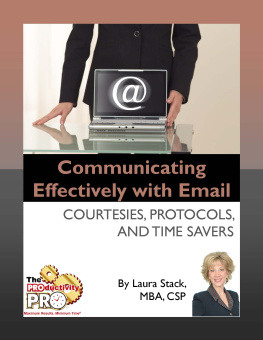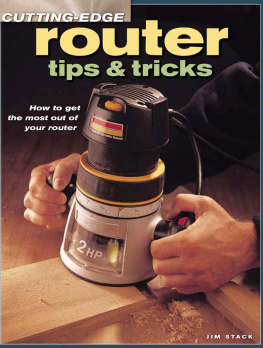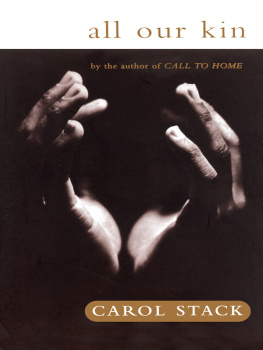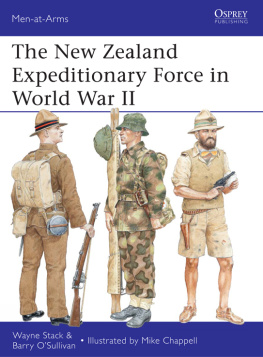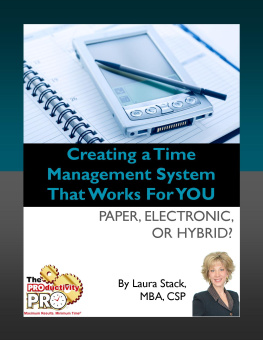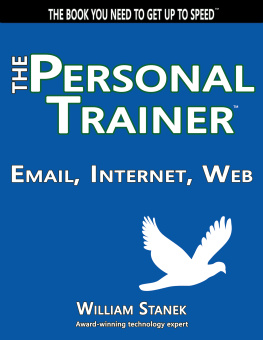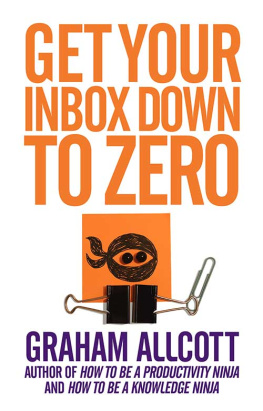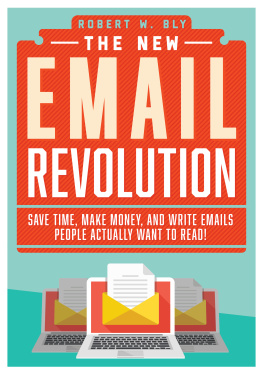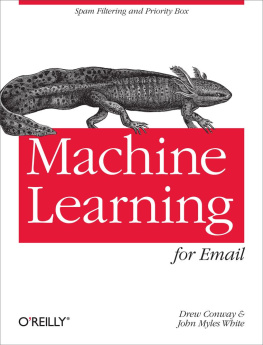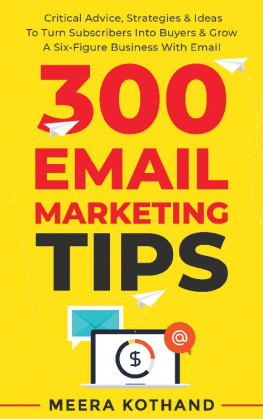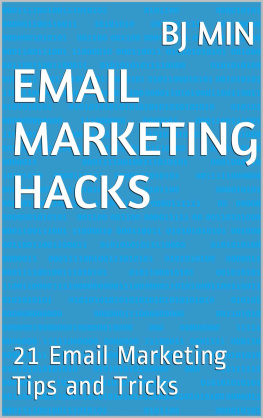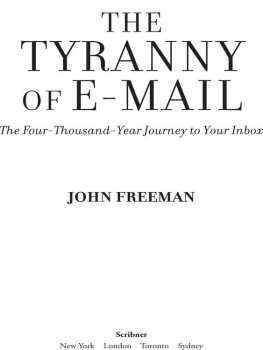Table of Contents
Communicating Effectively with Email:
Courtesies, Protocols, and Time Savers
By Laura Stack, MBA, CSP
How much time does it take for you to wade through emailevery day? Through this ebook, I hope to give you ideas on how to reduce theamount of time spent in your Inbox. Additionally, it would be nice to reducesome of the volume of email. Lastly, Id like to help you and your team useemail to communicate more effectively. Hopefully these are your goals as well.
After youve read this ebook,dont just keep these pointers to yourself! These tips will work best whenagreed upon and shared with other people. With that in mind, not everything isgoing to work for you. However, hopefully you will find some things that willmake you think, This will really help our email productivity, depending onthe culture at your organization and within your department or team. Others,you may realize, wouldnt work as well for you. My objective is just to throwas many ideas as possible at you.
Should We Use Email?
The first thing to consider is whether or not email is thebest way to communicate in the first place. Im sure youve had situationswith multiple email exchanges where youve thought, Why didnt we just pick upthe phone? This could have been resolved if we just had talked. Step back aminute and consider whether the medium youre using actually matches themessage.
Lets discuss a model to considerwhat type of communication would be most effective:
Channels of Communication:

We have two primary dimensions when we look at rich versuslean. Email sits toward the lean side of our model. Lets look at thedifferences between these dimensions and what constitutes each.
The first variable to consider is whether the message ispersonal versus impersonal. Some things need to be said in person because itis difficult to determine tone from an email. Have you ever tried to besarcastic in email, for example, and it didnt work because it was misread? Ifyou type something like Thats just fine, Bless your heart, or Yeah,sure, it could be interpreted differently if you were to say it. How about aperson who says, Thats just fine, while rolling her eyes? If there was atone in her voice, you may realize that its not just fine. Sometimes apersonal presence is necessary in order to convey emotion. Its often difficultto convey that over email.
The second variable to consider is whether the message isstatic versus interactive. Static is one-way communication. Do you ever feellike you are being talked at? In other words, you and the person are nothaving a dialog. In contrast, interactive communication is two-way. It needsto go back and forth in a way that benefits both participants. Staticcommunication could be acceptable if you are simply providing information. Its difficult, for example, to brainstorm via email. Interactive dialogs aredifficult to track and move quickly. Has anyone ever written an email to 15people in your department and people start hitting Reply to All, and suddenlythe whole group is trying to brainstorm in email with 47 messages? It is justnot effective.
Match the Message to the Medium
So how do you match the message that you want to communicateto the medium? Look at our model again and all the different ways we have ofcommunicating. The channels on the right side are perfect for lean messages. If you have something that is both impersonal (does not need to be said inperson) and is static (one-way), such as reports, letters, attachments, oranything you have that is routine and simple, putting it on a shared drive, anetwork drive, or in a public folder is very lean.
As you move up the channel to richer communication, we seevoice mail. At least in a voicemail, someone can hear your voice. What abouta video conference or a phone conference? Now you can add the element ofdialog when youre voice-to-voice with one person. Then we have meetings, therichest channel of a physical presence, where we are knee-to-knee, eye-to-eye,and voice-to-voice. Its a very rich, sensory experience but very expensive. Howmany times have you been in a meeting and wondered, Why are we here? We couldhave handled this in email!
So really think before you email. Is this something wherewe actually need to be in person instead of sending an email? Should I send ameeting request? Should this be in email at all or should I call the person? Should I get up and actually visit the person? Ive had many people complainabout co-workers who are just a couple doors down the hall but will never getup and come over and talk with them. Sometimes we need to have the extrameasure of interactivity or intimacy.
When youre thinking about communicating with your team andothers, dont just default to your favorite method. Everyone seems to have aSmartPhone these days. Some people use these Crackberries even while inmeetings, and you cant even talk to them because they are so absorbed in theirdevices. Encourage people to step back and think before hitting Send. Howwill it be received? Will it waste the time of anyone to whom its beingsent? How is it going to help them respond effectively and efficiently? Thereis a lot more that goes into deciding whether email is the right medium andcommunications tool.
Email Etiquette
Think before you email. If youre upset due tosomething a coworker said in email, its tempting to hit Reply and dash off anasty email and hit Send. That person may not have ever intended the messagethe way you read it, so now theres bitterness between team members. So a goodrule of thumb: if you wouldnt say it in person, dont say it in email. At thevery least, wait until you have calmed down. One of my standard techniqueswhen Im upset is to hit Reply as I normally would, take the persons nameout of the To line, and write whatever I want. I let it all out and feel alot better. However, I dont send it; I just hit Save. When I come back tothat message several hours later, Im always so relieved I didnt send what Ioriginally said. I edit the message at that time, adding the email addressback in and hopefully have a more productive conversation.
Informaldoes not mean sloppy. When you read email that has misspellings andpunctuation errors, you automatically get a perception of this persons writingas sloppy. Its important to spend the time to spell check your messages. Email still has to follow normal punctuation rules. We still have to have goodsentence structure, good grammar, and good spelling.
With texting, a different type of texting language existsthats really different from regular writing and is considered generallyacceptable. An example of this would be to type TTYL for Talk to youlater. However, resist the urge to use this format in emails to clients,except with those who really know you well. Email is still perceived to bemore of a letter. It can be forwarded, printed, and filed for all time. Becareful of the perception that your email conveys to others.
Use grammar rules. If you get lazy and turn on thecaps lock instead of typing upper and lower-case letters, it appears that youare shouting. Capitals should be used to emphasize words. Sentence caseshould be used, with the first letter in your sentence capitalized. Some textor email programs will automatically capitalize for you. (When I use myhandheld to send email, the first letter of every sentence will automaticallycapitalize.) Some people get used to this and get lazy with regular email, sotheir messages are all lower case. Again, its perceived as sloppy text. Itdoesnt serve you; it will have a significantly negative impact on perception. Capitalize the first letter of every sentence, using normal structure, so thatthe recipient doesnt think your work is sloppy.

